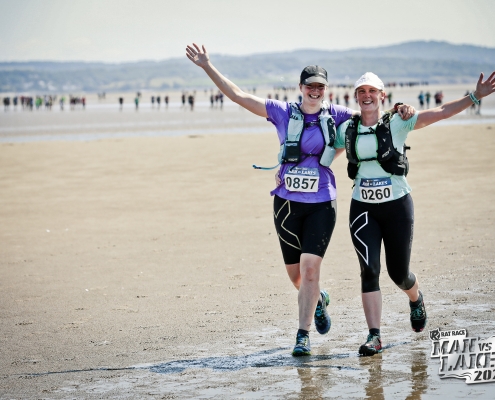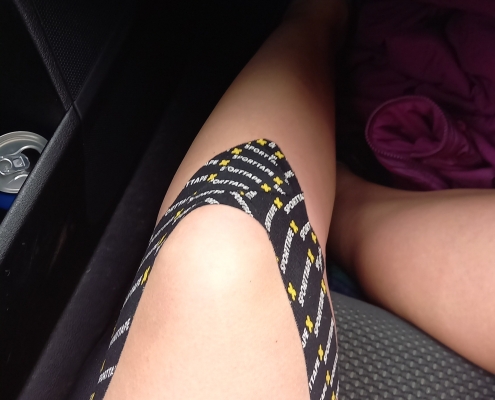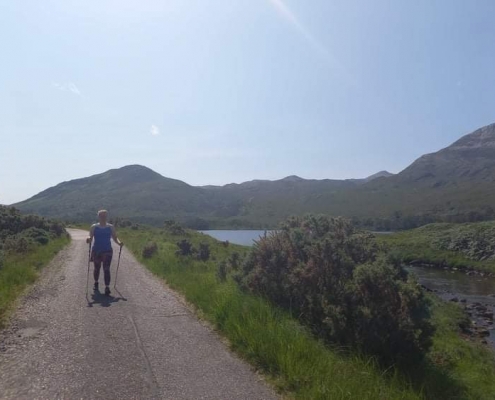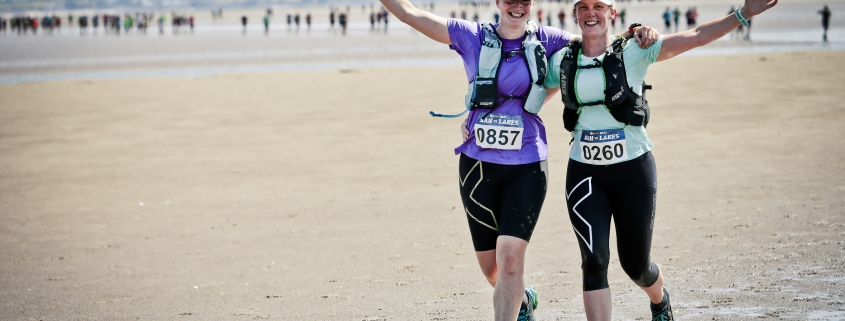Blog – Jenny’s knee injury
I don’t like being injured, but then who does!
The worst part for me is how it can feel like your world has changed so quickly. In an instant, you move from taking part in something you enjoy to having not only that moment taken away, but future goals and plans impacted too. At that moment, your whole focus has to change.
Rewind 3 weeks.
I am setting off to complete a hilly, tough 48km trail run in the Lake District National Park as part of the Rat Race Man vs trilogy of events with my best friend in tow to keep me company. I have already completed the first in the series, Man vs Coast, just 2 weeks earlier coming 21st out of 146 women. So despite the very high temperatures and feeling a little nervous about how well my body had recovered from the previous race, we had excitedly set off. Around 25km in, having already crossed Morecambe Bay and tackled over 2,600 feet of elevation, the pain began to develop on the inside of my left knee. Stubbornly I battled on (there is a medal to be had of course!) but as the next few kilometers ticked by, running reduced to a slow hobble. Even with my friend supporting me on the downhills, it became clear; I was not going to be completing the next 20km. Game over.
in the Lake District National Park as part of the Rat Race Man vs trilogy of events with my best friend in tow to keep me company. I have already completed the first in the series, Man vs Coast, just 2 weeks earlier coming 21st out of 146 women. So despite the very high temperatures and feeling a little nervous about how well my body had recovered from the previous race, we had excitedly set off. Around 25km in, having already crossed Morecambe Bay and tackled over 2,600 feet of elevation, the pain began to develop on the inside of my left knee. Stubbornly I battled on (there is a medal to be had of course!) but as the next few kilometers ticked by, running reduced to a slow hobble. Even with my friend supporting me on the downhills, it became clear; I was not going to be completing the next 20km. Game over.
 Having made it to a road to be picked up by event support it was time for ice from the medical tent and to apply some kinesiology tape. Inflammation is a natural injury and healing process, so ice is no longer necessarily recommended as the first point of call, however, I needed to get the pain under control and was nervous about taking painkillers while my body was dehydrated and been fuelled by snacks all day. Now was not the time to upset my stomach. My other concern was the next day we were traveling on to Loch Maree in the Scottish Highlands for a week of route recce of the extreme full distance triathlon, Celtman. This was not the plan.
Having made it to a road to be picked up by event support it was time for ice from the medical tent and to apply some kinesiology tape. Inflammation is a natural injury and healing process, so ice is no longer necessarily recommended as the first point of call, however, I needed to get the pain under control and was nervous about taking painkillers while my body was dehydrated and been fuelled by snacks all day. Now was not the time to upset my stomach. My other concern was the next day we were traveling on to Loch Maree in the Scottish Highlands for a week of route recce of the extreme full distance triathlon, Celtman. This was not the plan.
The first-week post-injury – setting priorities
- Monitor for any swelling
- Avoid aggravating factors
- Offload where possible
- Promote healing with gentle, pain-free exercise
- Seated heel sides to maintain range of movement and promote blood flow
- Static quad setting
- General stretches
 Thankfully I was able to cycle pain-free and went on to tackle the world-famous 2,054ft climb, Bealach-na-ba. Climbing up above the cloud level on the Applecross Peninsula. While running was out of the question, I had bought some trekking poles, so was able to reduce the load through my knee while walking.
Thankfully I was able to cycle pain-free and went on to tackle the world-famous 2,054ft climb, Bealach-na-ba. Climbing up above the cloud level on the Applecross Peninsula. While running was out of the question, I had bought some trekking poles, so was able to reduce the load through my knee while walking.
Questions… Patella tendinopathy? Impinged fat pad? Stress fracture? Would this heal in time for the final stage in the race trilogy, Man vs Mountain in early September?



